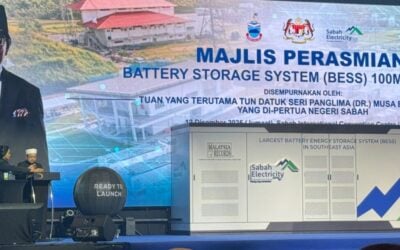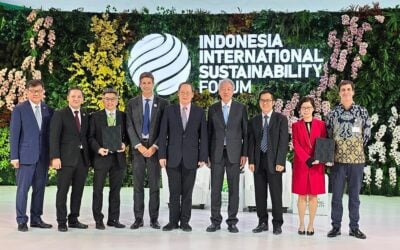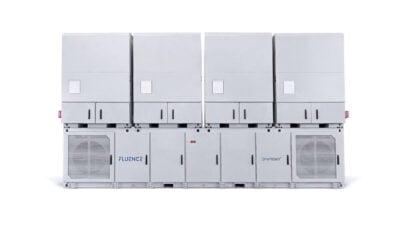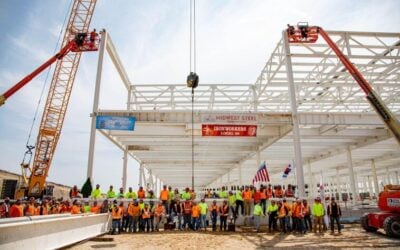
Global energy storage technology and energy software services provider Fluence and ACE Engineering have opened a new automated battery storage manufacturing facility in Vietnam’s Bac Giang Province.
The facility, which boasts an annual manufacturing capacity of 35GWh, will produce Fluence’s Gridstack Pro and Smartstack energy storage systems using fully automated production processes designed to enhance productivity and quality control.
The organisations said it will significantly expand Fluence’s production capacity for grid-scale energy storage systems amid growing global demand for battery storage solutions.
For perspective, this single facility could produce enough storage systems to deploy roughly 8.75GW of 4-hour duration battery storage systems annually.
Try Premium for just $1
- Full premium access for the first month at only $1
- Converts to an annual rate after 30 days unless cancelled
- Cancel anytime during the trial period
Premium Benefits
- Expert industry analysis and interviews
- Digital access to PV Tech Power journal
- Exclusive event discounts
Or get the full Premium subscription right away
Or continue reading this article for free
Fluence confirmed that the facility will manufacture its Gridstack Pro and Smartstack product lines, representing the company’s latest generation of grid-scale storage solutions.
Gridstack Pro is Fluence’s flagship large-scale front-of-the-meter storage system, designed for utility and independent power producer applications. The system features enhanced safety certifications, including UL9540 and UL9540A compliance, and is engineered for deployment in capacity-constrained areas of transmission networks.
Smartstack, meanwhile, targets commercial and industrial applications with a more compact footprint and integrated energy management capabilities.
According to Julian Nebreda, president and CEO of Fluence, the new facility will help provide the “next level of manufacturing excellence.”
“By combining advanced automation with rigorous quality standards, we believe we are optimally situated to meet stringent customer requirements and deliver competitively at the speed and scale the market demands,” Nebrada said.
Fluence to hit the lower end of revenue guidance for FY2025
Fluence recently released its financial results for the third quarter of its financial year, ending 30 June 2025. Its quarterly revenue stood at US$602.5 million, up 24.7% year-on-year from US$483 million.
However, the organisation is on course to hit the lower end of its previously issued revenue guidance for the 2025 financial year due to delays in ramping up at US production sites.
In the 2024 rankings of global BESS system integrators by shipments released earlier this month by market research firm Wood Mackenzie, Fluence lost its position in the top five, having placed second for 2022 and third in 2023.
Fluence’s development pipeline is mostly located in the Americas and much of that in the US. Company leadership said that projects that had been put on hold last quarter due to policy uncertainty were starting to move again.
As previously reported by Energy-Storage.news, the US market accounts for around half of Fluence’s business. In addition to sourcing cells from AESC’s factory in Tennessee, the company has built a module factory in Utah, a component factory in Texas, and a BESS enclosure assembly plant in Arizona.
However, the company has ties to several international regions, including Australasia and Southeast Asia.
Global energy storage players turn to Southeast Asia for manufacturing
With growing interest in energy storage technologies and manufacturing capacity in Southeast Asia, Fluence opened the manufacturing plant in Thailand to capture this budding market.
Several other energy storage companies have turned their attention to Southeast Asia to expand their manufacturing capacity. One of the most noteworthy is CATL, a Chinese battery and BESS manufacturer, which broke ground on the US$6 billion Indonesia Battery Integration Project in July 2025.
CATL claims the project will span the “full battery value chain ” and involve multiple sites involved in everything from nickel mining and processing, battery materials production, and recycling to a battery manufacturing facility with an initial annual production capacity of 6.9GWh.
In January, REPT Battero, another Chinese Li-ion manufacturer, announced that it intends to build Indonesian Battery Factory, a gigafactory specialising in cells for BESS applications with 8GWh annual output.
The government of Indonesia recently launched a programme to build 100GW of solar PV and 320GWh of BESS in the coming years, mostly through smaller projects in rural areas.
The news comes as our publisher Solar Media prepares to host the Energy Storage Summit Asia 2025 this October in Manila, the Philippines.





